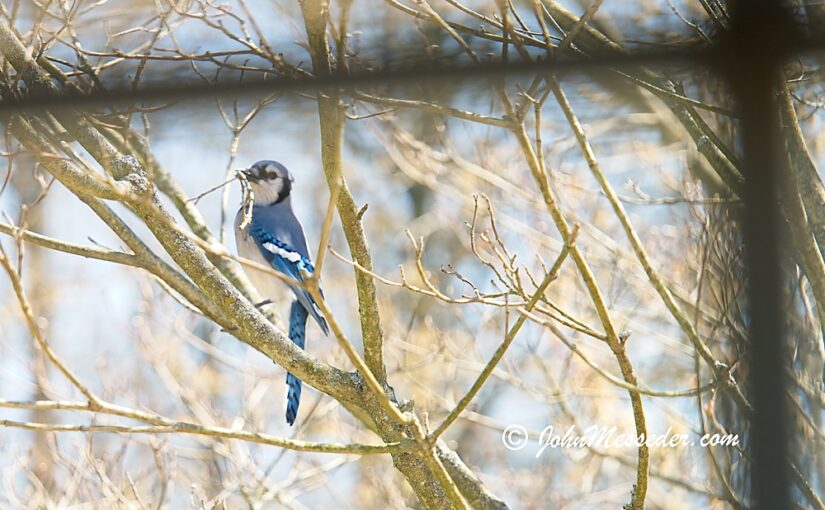An ethereal blanket of translucent maroon — the color of shrubs in transition from the blah gray of the past few months to the green cloaking that soon will block the view of even large rocks more than about 50 feet distant — seems to flow like an incoming fog across the forest floor..
The forest seems to present a lesson for us lesser beings. Winter comes and seems to destroy the previous year. It freezes the land and all upon it.
Then, finally, spring arrives and we learn that what we thought was gone had only entered suspended animation. Trees burst out first in tentative pastels which the arboreal alchemists employ to convert sunlight of the warmer days to chlorophyll, settling the mountain attire into shades of green.
Spring winds have toppled trees, some with their shallowly established roots tipped out like inverted mushrooms, others broken at weak spots in their fibrous skeletons.
I stop to watch and photograph a dozen or so Dark-eyed Juncos. I call them “preacher birds” because their dark gray coats and white shirts remind me of preachers in old western movies.
They poke in the ground thatch seeming to pay me little heed, though as I, stealthily as humanly possible, inch closer, the flock moves with me, maintaining its distance, until I slowly lie down to their level and they unhurriedly scatter into the nearby woods.
Woodpeckers flit about out of sight, searching for dinner, mates and suitable trees for the latter to rear this year’s offspring. I watch a Hairy Woodpecker carve a Gray Birch, prying away bark and small chunks of rotting tree the way a sculptor might use a hammer and chisel to shape a block of stone.
Catching the little guys in the act requires patience and a comfortable place to post, though their drumming echoes throughout the forest. It is written that better ears than mine, including those of trespassers and potential mates, can discern in a woodpecker’s drumming a whole vocabulary of information in addition to the exposure of the afternoon repast.
I think sometimes of the signs we leave behind as we wander through the lair of woodpeckers, deer, bears and the occasional, usually friendly, dragon. Some of our kin caution us to “leave no trace” but that is an impossible task. At the least, we tamp the ground beneath our feet.

On the other hand, there is no excuse for proving our sloven disregard for others’ homes with beer and soda cans and the occasional empty plastic container of chain oil from a day collecting blown-down firewood for our own hearths.
I am conscious that I go into the woods with a device concocted of ancient mountains, plants and dinosaurs that contains my cell phone, a GPS and a notepad upon which I write my mental meanderings. Those conveniences have left their marks in the mines drilled and scraped into the earth as we, Hairy Earthpeckers that we are, access the materials we require.
Meanwhile, outside my studio window, a Blue Jay lands in the dogwood and snaps off a branch — which in at least one case he then could not extricate from the maze of branches he had to navigate to fly away with his booty. After several unsuccessful efforts, he dropped the twig and moved to a clearer part of the tree to find a more maneuverable sample.
I wonder whether he notices the buds, tightly clenched against the winter, beginning to welcome spring as though even the tree is laughing at the otherwise boastful jay who has grabbed a limb too big for him to carry home.
The mountains do not experience winter as they once did, but many critters still depart, seemingly out of habit, and trees still huddle naked against the cold, leaving the hibernating forest virtually lifeless.
But spring has arrived, and life has returned to the mountains.
©2023 John Messeder. John is an award-winning environment columnist and social anthropologist, and lives in Gettysburg, PA.

A nice portrait, John.
Thank you, kind sir.